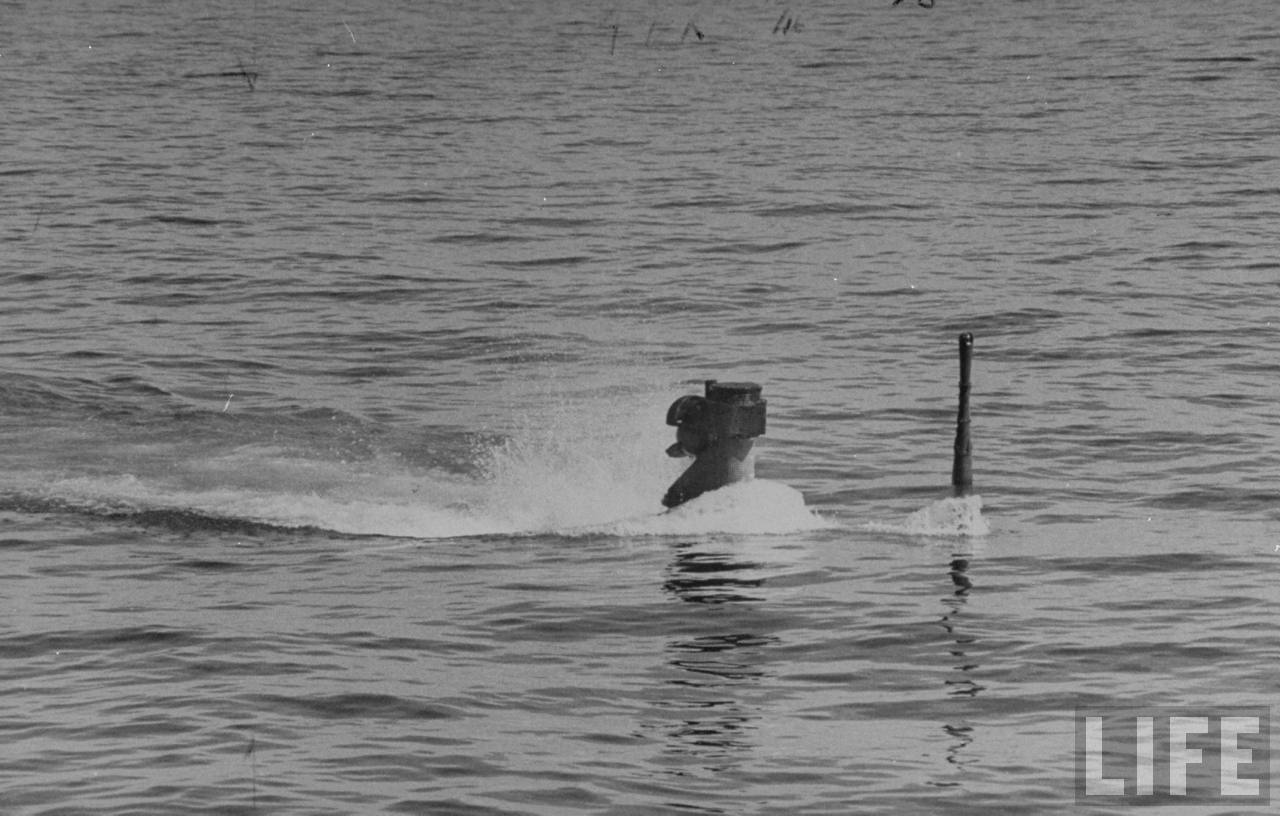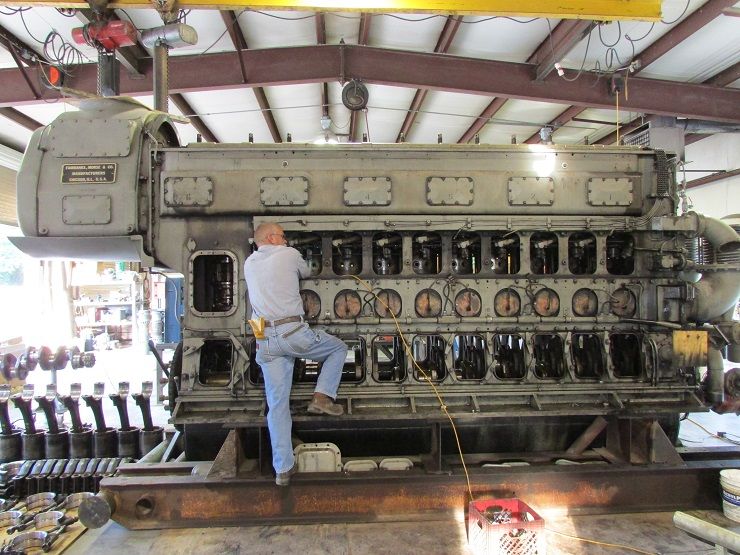Oh for sure you don't just trust the systems. I'm shocked that there was a human failure far enough up the chain to let water in the boat from the snorkel at all. Heavy seas splash over it or was this a full-on dunce move?
As a side note, fully understanding that it's a dangerous job, given all of the ways you've outlined how to easily die (and a few times you thought it may be a risk), what was a respectively "care free" day on a sub like? I would think various quiet ops, which can't be discussed, would be areas of general low stress? Fewer drills and such maybe?
The diesel sucks in serious air. And the mast doesn't stick above the water very much.
Kinda like this..

So, moisture is brought in.
It comes down the trunk, into a sump.
There it makes a 180 degree turn.
The water can't make the turn, the air continues up and out the top of the sump.
There is a window there to watch.
A watchstander sits there when snorkeling, his only job to watch the window.
But, it's a boring watch, so it's usually a junior watchstander.
He called the control room to report "There's a lot of water here".
The replied back that was okay, "There's always water there".
And they were right. It always looks like it's raining.
But when the watchstander said "There's a lot of water here", he meant, there was a SOLID SLUG OF WATER.
So we filled the Operations Compartment bilge, all the way to the floorplates, and into my bunk which was the bottom of 3 bunks.
When I jumped up and called away flooding in Ops Lower Level, they realized they maybe should have listened better.
So, the interlock failed.
And the human element failed.
We were lucky.
On the surface, water pours in.
Real deep, you can be dead before you knew the water was coming in.
At test depth, water breaching into the sub can completely fill it in less than a second.





